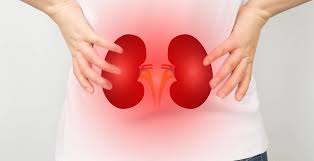Pelvic inflammatory disease (PID) is a common and serious condition that affects millions of women worldwide. It occurs when bacteria spread from the vagina and cervix into the uterus, fallopian tubes, ovaries, and surrounding tissues. PID can cause a wide range of symptoms and can lead to complications such as infertility, chronic pelvic pain, and ectopic pregnancy. In this article, we will discuss the causes, symptoms, diagnosis, and treatment of pelvic inflammatory disease.
Causes of Pelvic Inflammatory Disease:
The most common cause of PID is a bacterial infection, usually transmitted through sexual contact. The most common bacteria that cause PID are Chlamydia trachomatis and Neisseria gonorrhoeae. However, other bacteria, such as Mycoplasma genitalium and Streptococcus agalactiae, can also cause PID. In some cases, PID can be caused by a non-sexually transmitted infection, such as an infection from a ruptured appendix or a post-surgical infection.
Risk factors for Pelvic Inflammatory Disease:
Certain factors increase the risk of developing PID, including:
- Having multiple sexual partners
- Having unprotected sex
- Having a history of sexually transmitted infections
- Using an intrauterine device (IUD) for birth control
- Having a history of PID or other pelvic infections
- Douching
Symptoms of Pelvic Inflammatory Disease:
PID can cause a wide range of symptoms, which can vary in severity. Some women may have no symptoms at all, while others may experience severe pain and fever. The most common symptoms of PID include:
- Pain in the lower abdomen or pelvis
- Heavy or painful periods
- Painful sex
- Vaginal discharge with a foul odor
- Fever and chills
- Nausea and vomiting
- Painful urination
Diagnosis of Pelvic Inflammatory Disease:
PID can be difficult to diagnose because the symptoms are similar to those of other conditions such as urinary tract infections, appendicitis, and ovarian cysts. To diagnose PID, your doctor will perform a physical exam, including a pelvic exam. They may also order blood tests, a urine test, and a pregnancy test to rule out other conditions. In some cases, imaging tests such as an ultrasound or MRI may be necessary to confirm the diagnosis.
Treatment of Pelvic Inflammatory Disease:
PID is usually treated with a combination of antibiotics. The antibiotics may be given orally or through an IV in severe cases. Your doctor may also recommend pain relievers, such as ibuprofen or acetaminophen, to help relieve pain and discomfort. It is important to take the full course of antibiotics as prescribed, even if your symptoms improve, to prevent the infection from returning.
In some cases, PID may require hospitalization, especially if the infection is severe or if complications such as an abscess or ectopic pregnancy are present. In severe cases, surgery may be necessary to remove infected tissue or to repair damage to the reproductive organs.
Prevention of Pelvic Inflammatory Disease:
The best way to prevent PID is to practice safe sex. This includes using condoms during sex, limiting your number of sexual partners, and getting tested for sexually transmitted infections regularly. If you have an IUD, it is important to have it checked regularly by your doctor to make sure it is in place and not causing any infections. Avoid douching, which can disrupt the natural balance of bacteria in the vagina and increase the risk of infection.
Conclusion:
Pelvic inflammatory disease is a common and serious condition that can cause a wide range of symptoms and complications. If left untreated, it can lead to infertility, chronic pelvic pain, and other serious health problems.






























